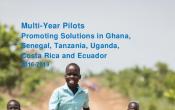Costa Rica
Operation: Costa Rica
Location
{"longitude":-84,"latitude":10,"zoom_level":7}
Latest update of camps and office locations 21 Nov 2016. By clicking on the icons on the map, additional information is displayed.
Key Figures
| 2018 planning figures | |
| 12,000 | people of concern will receive legal assistance |
| 600 | people of concern will receive vocational skills training for livelihood purposes |
| 182 | people of concern will be naturalized |
| 2016 end-year results | |
| 4,050 | people of concern receied legal asisstance |
| 4,360 | people of concern received cash assistance |
| 640 | people of concern received livelihoods training |
| 510 | people of concern were enrolled in job integration programmes |
Latest Updates and Related Links
People of Concern
9%
Decrease in
2016
2016
| 2016 | 7,953 |
| 2015 | 8,705 |
| 2014 | 23,718 |

[["Refugees",4180],["Asylum-seekers",3646],["Stateless",127]]
Loading ...
Costa Rica
< Back
2016
{"categories":[2013,2014,2015,2016,2017,2018],"budget":[2.05651441,2.88287074,3.028757242,4.77087632,6.46405512,8.019699022],"expenditure":[1.77834604,1.9659955,2.50565576,3.45812078,null,null]}
{"categories":[2013,2014,2015,2016,2017,2018],"p1":[2.05651441,2.88287074,3.028757242,4.52223732,6.05407202,8.019699022],"p2":[null,null,null,0.248639,0.4099831,null],"p3":[null,null,null,null,null,null],"p4":[null,null,null,null,null,null]}
{"categories":[2013,2014,2015,2016,2017,2018],"p1":[1.77834604,1.9659955,2.50565576,3.21075754,null,null],"p2":[null,null,null,0.24736324,null,null],"p3":[null,null,null,null,null,null],"p4":[null,null,null,null,null,null]}
Loading ...
CHOOSE A YEAR
- 2015
- 2016
- 2017
- 2018
Year-end Overview
Plan Overview
Working environment
The working environment in Costa Rica is strongly characterized by the displacement caused by situations in Colombia, the North of Central America (NCA) and Venezuela, reaching close to 11,000 refugees and asylum-seekers as of 2017. Costa Rica has also become a transit country for people in a mixed movements and asylum-seekers from other regions, such as Africa, Asia and the Caribbean, in their journey northwards.
The number of new applications from Venezuelans has risen by 1,681 per cent over the last three years. With an average recognition rate of 10 per cent for the Venezuelan caseload, many Venezuelans do not meet the Refugee Convention’s criteria though they may require international protection.
Costa Rica’s sound protection and integration environment for people of concern in expected to continue in 2018.
Refugee and asylum-seekers have mixed socio-economic background. The socio-demographic profile of NCA nationals in Costa Rica is decreasing their local integration prospects, as they mainly arrive in large families and often experience vulnerabilities. Due to unemployment, the self-reliance prospects of people of concern are limited. Barriers to employment are posed by the labour competition in urban areas and the high cost of obtaining and renewing a refugee ID.
As one of the Comprehensive Refugee Response Framework (CRRF) pilot countries, consultations in Costa Rica have so far assessed the achievements made in the Brazil Plan of Action implementation, such as quality of asylum; alternatives to administrative detention; local integration for those people of concern who are included in the national social programmes; benefit from corporate social responsibility schemes; and refugees count on facilitated naturalisation procedures. Through the CRRF, the Government of Costa Rica will take full responsibility of the refugee Protection and Solution programmes, while UNHCR and partner agencies will complement the Government’s actions through gap filling initiatives.
Key priorities
In 2018, UNHCR will focus on:
- Enhancing presence at points of entry to the territory;
- Strengthening the Government’s RSD capacity;
- In line with Costa Rica´s CRRF, advocating for gratuity of refugee IDs to allow access to rights on the same footing as nationals
- Supporting the Government’s initiatives for child protection and sexual and gender-based violence (SGBV) prevention and response;
- Filling any possible gaps in Government-led humanitarian initiatives, in line with the Commitments agreed within MINARE;
- Enhancing refugees’ access to employment through the “Living Integration”, a corporate social responsibility communication strategy
- Consolidating the Protection Transfer Arrangement (PTA), a programme, which aims at the humanitarian evacuation of people at heightened risk from El Salvador to Costa Rica, and from there to other resettlement countries;
- In line with CRRF, UNHCR will advocate for Complementary protection measures for those who do not meet the 1951 Convention refugee criteria and are still in need of international protection.




